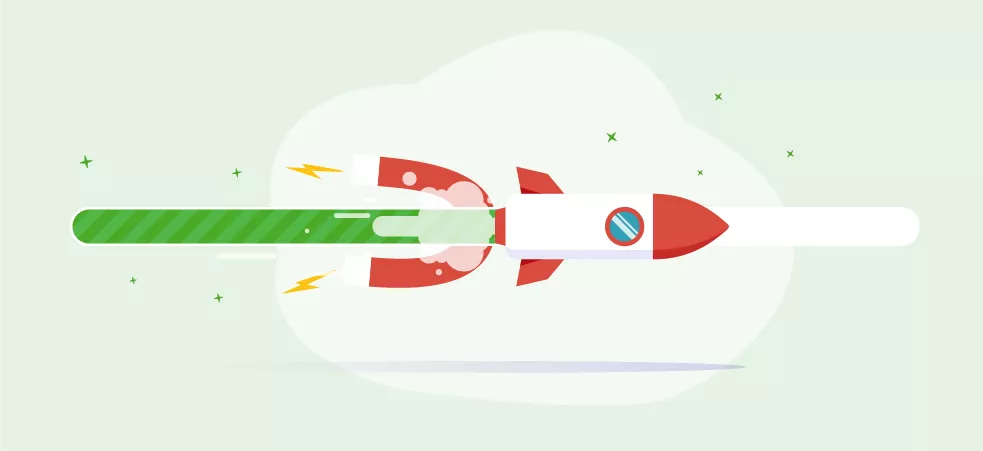The ready-to-use CRM for small businesses and startups.

What Is Trigger Marketing?
Trigger marketing, definition.
What is trigger marketing?
It is a marketing technique which triggers the automatic sending of a message to potential or actual customers in the course of the customer journey, for instance after a specific event.
This message can be sent by email, SMS, mail, etc. It is linked to a specific action taken by the customer (a purchase, completing a web form, an anniversary, etc.).
The most common forms of trigger marketing.
Functional messages
Functional messages are probably the most widespread form. These are used to send identifiers to customers who have created their online account, or to send an automatic summary (purchase, train ticket, monthly invoice, etc.).
Promotional messages
Promotional messages are a great classic of trigger marketing! Brands can use these to contact customers who have reached a certain number of loyalty points to offer them a discount. Or it might be to invite its most loyal customers to a private sale. There is no shortage of types of promotional messages and brands are constantly coming up with new ideas.
Transactional messages
Transactional messaging is the form of trigger marketing that is perfectly well mastered by e-commerce sites. The objective of the transactional message is to contact the customer to finalise the sale, to convert the transaction into a reality.
Sales cycle messages
Sales cycle messages are also an essential part of trigger marketing strategies, particularly in certain sectors (high-tech, household appliances, etc.). When you buy a camera online, you quickly receive suggestions for additional accessories or services (warranty extension, protective pouch, SD card, etc.). This is commonly called cross-selling.

The origins of trigger marketing.
According to the books of Philip Kotler, grand marketing guru, these are the 4 steps in the evolution of marketing strategies:
Marketing 1.0: product-driven
At the very beginning, marketing was product-oriented. Companies raise awareness about their offer by sending mass-emails to their database. It was the era of simply loading and firing email cannons. This is very different from trigger marketing.
Marketing 2.0: customer-centric
Marketers soon realised that not all customers think the same way, and that they don’t always use products the same way. This led to the development of customer-centric strategies. At this stage in the history of marketing, targeting performance was refined and the notion of persona emerged. The same message was sent to all those concerned by it. One step closer to trigger marketing…
Marketing 3.0: human-centric
Then came the era of relationship marketing. The aim here was to build lasting and satisfying relationships with customers and prospects so as to foster long-term trust. This is when the notion of content personalisation was built into in marketing strategies. However, this was still done en masse, without necessarily taking into account the individual path-to-purchase.
Marketing 4.0: technology convergence
Today, marketing goes even further because its objective is to integrate digital marketing with traditional channels. To what end? To exploit customer journey innovations, from brand or product awareness to recommendations. After the famous 5Ps of the marketing mix (Product, Price, Place, People and Promotion), we now talk about the 5As: Aware, Appeal, Ask, Act, Advocate. In concrete terms, this means one essential thing: it is the customer who decides and it is the customer event which triggers the marketing action. That is how trigger marketing was born! If the message is to attract customers and build loyalty, then it must perfectly match customer expectations, in terms of content, timings, channels, etc. (see the definition of the trigger marketing).
Applications and benefits of trigger marketing.
Companies are increasingly interested in trigger marketing because of its effectiveness and the economic benefits it offers. Let’s take a look at the main advantages it can bring you.
Improved deliverability
Since the message is sent to customers after an event triggered by them, they are more likely to read it. The company will then see a significant improvement in its open rate. The good news is that this contributes to the sender’s reputation. This means that next time round, the open rate will be even better. As a result, its deliverability rate will also be improved – and so on and so forth.
Optimising your automation marketing campaigns
The best CRM system on the market enable you to fine-tune the way you target your database and then instantly send e-mails or SMS.
Inform as a gateway to boosting sales
Trigger marketing is a great opportunity to integrate cross selling (new store opening, ongoing promotions, new products, etc.) into informative message.
At the same time, this knowledge of the customer journey gives companies an undeniable edge: it gives them data that their competitors do not have. They then have to analyse this data in order to exploit it. Let’s take a real-life example: a tour operator who sent advertising for its summer trips to its entire database in February.
Their performance was, at best, far from ideal. They then decided to break down the silos to capture key information: when did customers start thinking about their summer holidays last year? It then became clear that this was spread out.
Some people started looking into it six months ahead of time, for others it was two months before and others still one week before. Based on this information, the tour started sending out information based on customer profiles. The result: their bookings increased twenty-fold!
Now that you know what it means, find out how it fits into your CRM. Request a free demo now!





